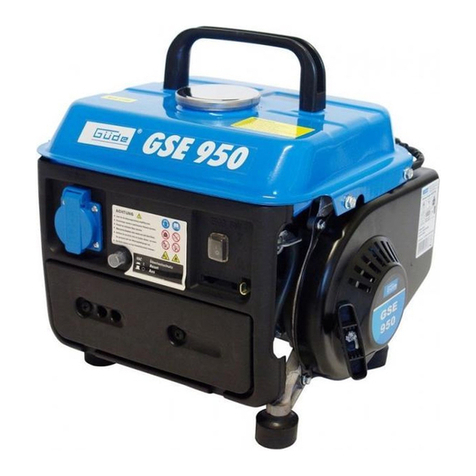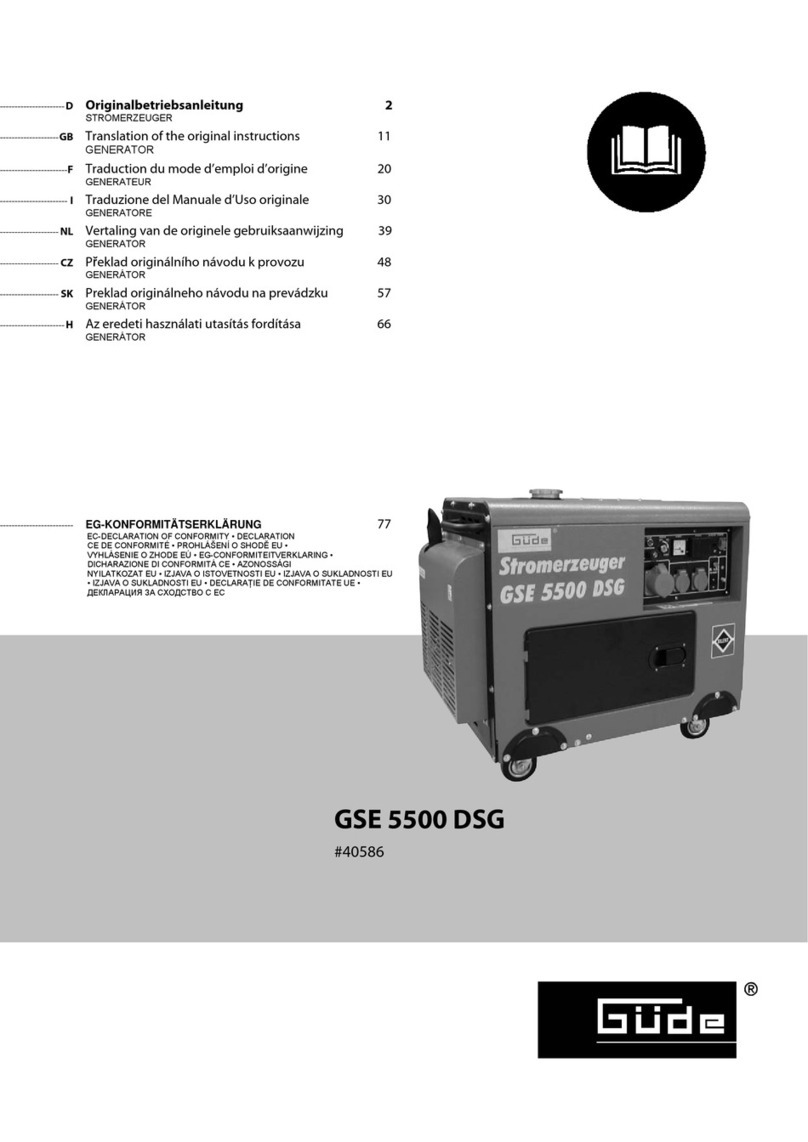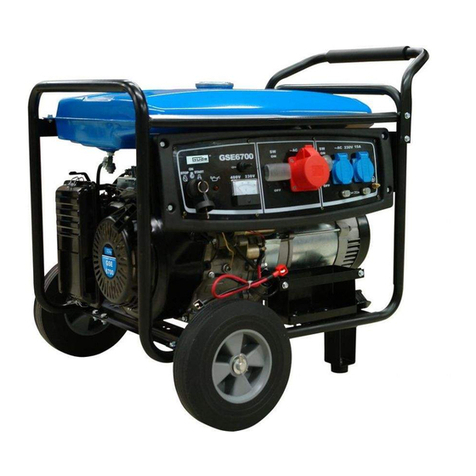
Operation
Use of Generator „Turning On“
Fig. 6
•Open the petrol cock by turning (ON).
•Put the choke in the starting position (see sign on the
air filter).
•Pull the starting cable slowly until resistance is felt,
then make a strong pull to start the engine.
•When the engine gets heated up, push the choke in
the initial position and wait for the indicator to light up.
•Connect the appliance cable
•If the output is overloaded, the overloading fuse will trip. The
indicator lights on.
•The generator will switch off automatically at short circuit.
Generator Turning Off
Fig. 7
•Make sure that NO appliance is connected.
•Put the on/off switch in OFF position.
•Turn the fuel cock to OFF.
Operator Safety Instructions
See General Safety Instructions and Initial Operation Safety Instructions.
•Do not use the machine until you have read the instruction manual carefully.
•Observe any safety instructions included In the manual.
•Be responsible to the others
Troubles – Causes – Troubleshooting
Trouble Cause Troubleshooting
The engine will not
start up .
1. Fuel cock closed
2. No fuel
3. The starter pull too weak
4. The ignition plug too distant
Ignition plug socket loose, wet
5. Ignition plug socket loose
6. Too little oil in the tank
1. Make sure that the fuel cock on/off
switch are in on position
2. Make sure that there is enough fuel in
the tank.
3. Pull the starting cable stronger.
4. Make sure that the ignition plug is
properly mounted.
5. Make sure that the ignition plug cable is on the
plug. Clean the plug and check the electrode
distance.
6. Replenish the oil
Engine runs unevenly
1. Too small appliance
Ignition system not in order
2. Poor fuel
1. Make sure that the plug is properly
mounted. Make sure that the plug cable
is on the plug. Clean the plug and check
the electrode distance.
2. Make sure that the used fuel is correct.
No current from
generator.
•Short circuit
•Defective cable
•Loose cable
1. If the light indicator is off, the defect is
impossible to be cleared by yourself. .
If the light indicator is on :
2. Press the overloading protection for the
required output.
3. Check the connection
4. Check whether a short circuit or overloading is not
the cause.
Inspections and Maintenance
Regular cleaning and maintenance is essential for perfect functioning and long service life of the unit.
No smoking in the course of the described jobs.
Never work close to sparks, flames or open fire.






































